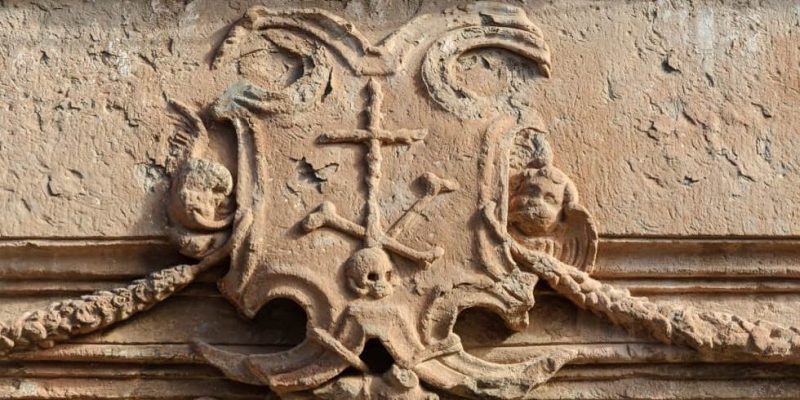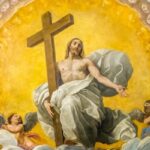We explain what a heresy is and under what forms it appears in the Bible. Also, the main heresies of the Middle Ages.

What is a heresy?
The heresy is any religious practice that distances itself from the methods or traditions of a church specific, that is, a specific church considers as heretics those who, whether or not they fundamentally believe in the same thing, choose not to follow ecclesiastical guidelines and doctrines, but their own.
The word heresy comes from the Greek hairetikostranslatable as “he who chooses” or “who is free to choose”, from where it was taken by the Romans and converted into hereticus. It was later used by early Christianity to condemn those who rejected the new biblical gospels.
It is a term similar (but different) to that of apostasy, which is the voluntary renunciation of a religion, and blasphemy, which is the irreverent offense or affront towards a religion.
The use of this term arose between the 2nd and 3rd centuries (AD), when Christianity became the majority religion of the Roman Empire and began to exercise its power to the exclusion of other forms of religiosity. In this context, the first Christian heterodoxies emerged that is, variants of the main cult, and being condemned as deviations by the nascent Christian church, became formally heresies.
Both the Council of Nicaea (325) and the work of Saint Augustine of Hippo (354-430) were key in the persecution of heretics in the second and third centuries. Later, and throughout the Middle Ages, any doctrine that openly and voluntarily opposed the sacred scriptures was considered heresy. Currently, Catholicism considers religious movements from the 1st to the 19th century as heretical.
However, this religious sense of the word, which emerged in times when people wanted to “protect the true faith” of those who adhered to other cults, is preserved today and serves to the figurative use of the word, with which anyone who attacks the established order can be called or traditional things.
See also: Idolatry
Heresy in the Bible
The term “heresy” does not appear in the Bible, since its use in the religious context occurs after the writing of the New Testament. However, the text abounds in warnings and condemnations of false prophets and divergent cults, as in:
- Hebrews 13:9. “Do not be carried away by diverse and strange doctrines, because it is a good thing for the heart to be strengthened with grace, not with food, from which those who cared for them received no benefit.”
- Galatians 1:6-7. “I marvel that you have so soon abandoned him who called you by the grace of Christ, for a different gospel; which is not another, only that there are some who disturb you and want to pervert the gospel of Christ.”
- 2 Timothy 4:3-4. “For a time will come when they will not endure sound doctrine, but having itching ears, they will accumulate for themselves teachers according to their own desires; and they will turn their ears away from the truth, and they will turn to myths.”
- Peter 2:1. “But there were also false prophets among the people, just as there will be false teachers among you, who will secretly introduce destructive heresies, and even deny the Lord who rescued them, bringing upon themselves sudden destruction.”
Heresy in the Middle Ages

Since the Middle Ages was the era in which Christianity was imposed as the main religion and philosophy throughout the West, it was also a historical period of important struggles of the Catholic Church against heresy and heterodoxy. The Tribunal of the Holy Office of the Inquisition, established by Pope Gregory IX (1170-1241), took special care of this.
The main medieval heresies that the Catholic Church faced were:
- Arianism. As a result of the teachings of Bishop Arius in the last decades of the 3rd century and the beginning of the 4th century, he opposed the doctrine of the Holy Trinity, considering Jesus Christ as another creature created by God, and not his son. It was one of the most widespread heresies of its time, and survived until the 6th century in the Gothic monarchy of ancient Roman Hispania.
- Adoptionism. One of the two branches of the monarchian heresy, one of the so-called Christological heresies of the 2nd century, had an important resurgence in the 8th century, especially among the bishops of Spain partially conquered by the Muslims, and found its end in the second Council. of Nicaea in 787 and the Council of Frankfurt in 794. Among their beliefs were that Jesus Christ was born human and was subsequently adopted by God, acquiring divine power after baptism in the Jordan River.
- Pelagianism. Doctrine founded by the English monk Pelagius between the 4th and 5th centuries, it was popular in northern and eastern Africa and survived until the 6th century in Gaul and Great Britain. Among his proposals was that baptism was unnecessary, since original sin had affected only Adam and Eve, and therefore it was not necessary to earn salvation.
- The Waldensian Church. Organized by Pedro de Valdo, a wealthy merchant who renounced his property and opted for a strict vow of poverty, they were initially praised by the Pope, but when they rejected the prohibition of preaching without authorization from the Church, they were excommunicated in 1184. Many of They returned to Catholicism, but others defended their “heretical” positions.
- catharism. It was the largest and most important of the medieval heresies, both in its extent and in its political consequences, and in that it constituted a real threat to the Catholic Church. The Cathars (whose name came from the Greek kathars“perfect” or “pure”) were heirs of Manichean thought, so that they understood the world in strict terms of good and evil, and they organized their own church around it. They understood everything material and corporeal as the fruit of evil, and therefore unworthy, while the spiritual was the only good and elevated thing; in fact Jesus Christ himself was understood as an angel and his death and resurrection as a metaphor. In their church, marriage was prohibited and conception was seen as a cruel exercise, since it trapped spirits in the world of the body, and they went so far as to practice selective murder as a form of spirit liberation. After many tensions and disputes, since the Cathars were tolerated by many local authorities in France, the heresy was crushed in the Albigensian Crusade (through the city of Albi), between 1209 and 1244, with the support of the French kings of the time.
Continue with: Witchcraft
References
- “Heresy” on Wikipedia.
- “Heresy” in the Dictionary of the language of the Royal Spanish Academy.
- “Heresies” in Filosofía.org.
- “Medieval heresies” in Arteguías.
- “Heresy” in The Encyclopaedia Britannica.





